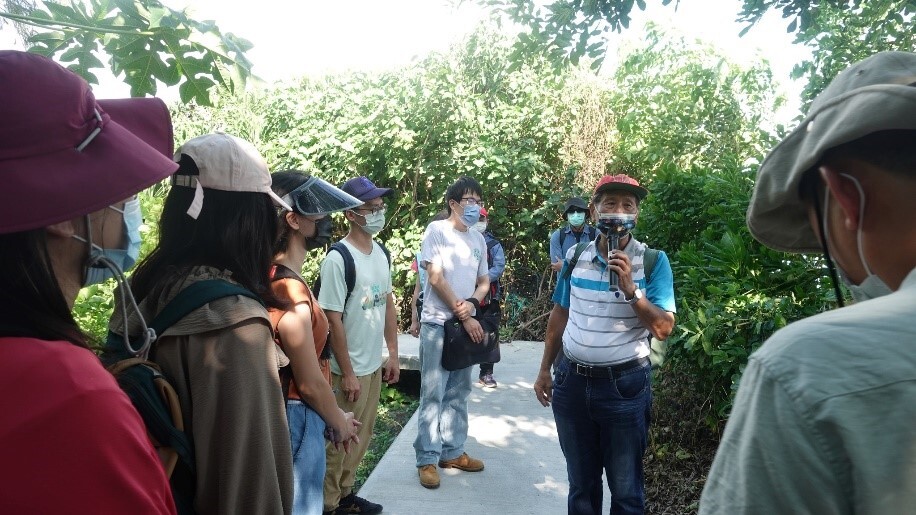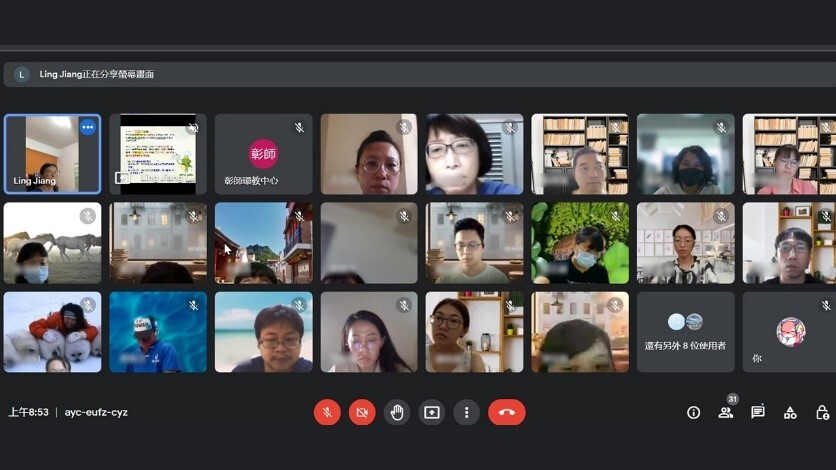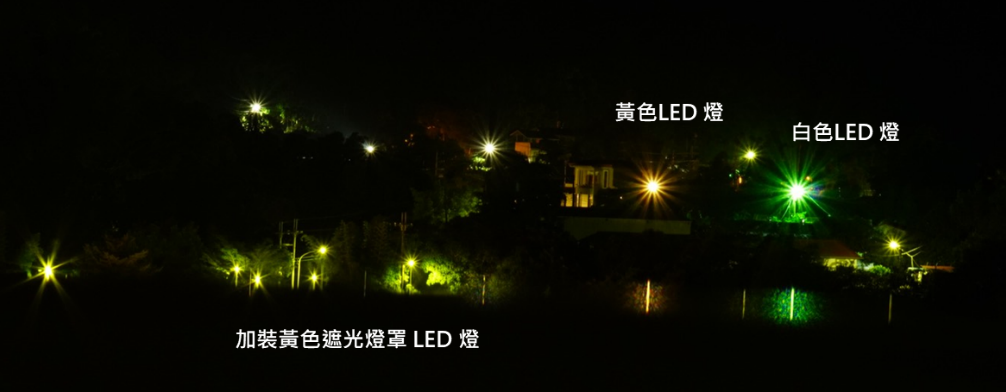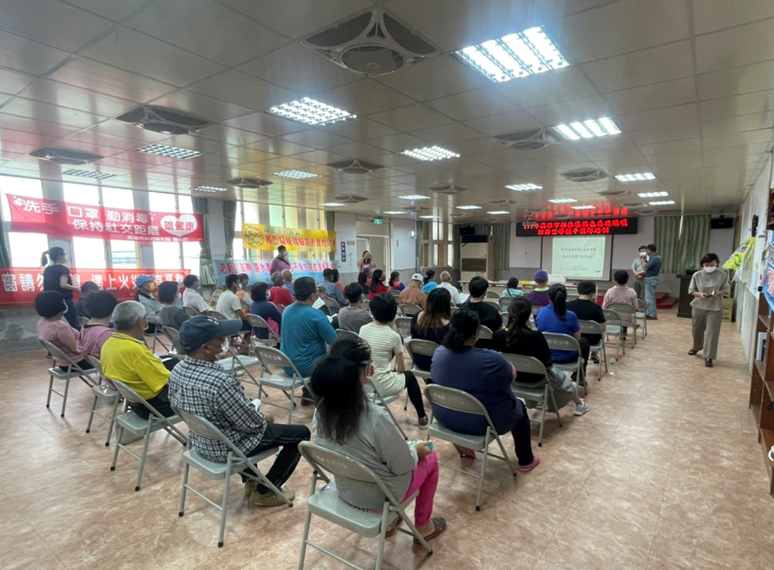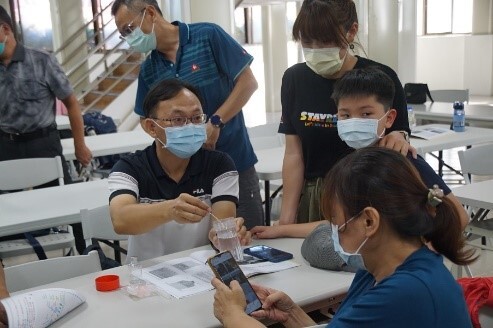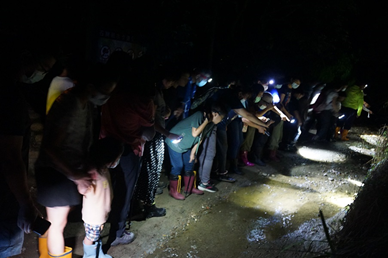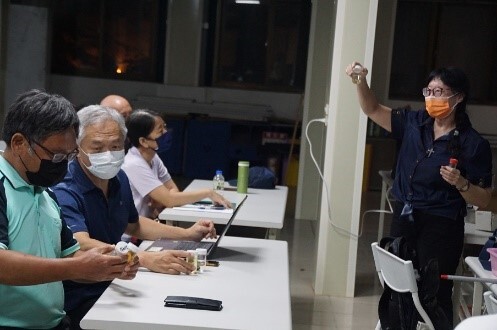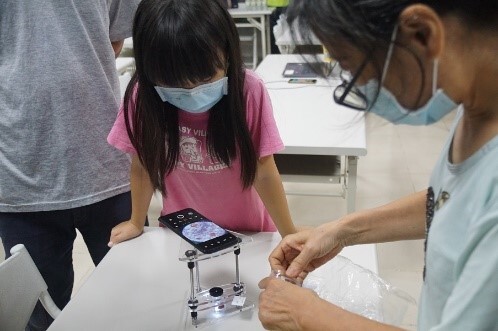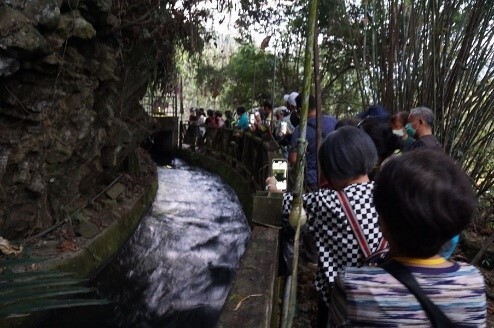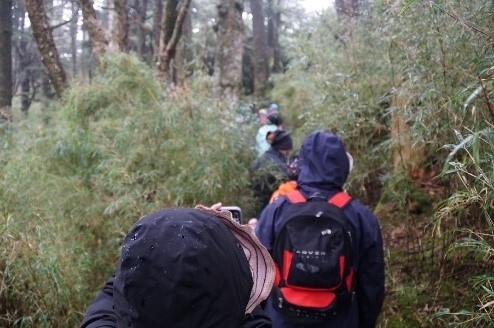SDG 15.2.4 Educational programmes on ecosystems
NCUE does offer projects and activities, including Environment Education Centre’s “24-, 33-Hour Courses for Environmental Educator Certification”. Additionally, the Department of Biology designed the Kaohsiung City Evaluation Plan for the Survey and Control Strategy of Flying Ant Harm, while the Center of Science Education planned events. They are described briefly below section.
1. 24-, 33-Hour Courses for Environmental Education Personnel Certification:
The Environmental Education Center (EEC) nurtures relevant environmental education talents; In conjunction with the project “In-Depth Cultivation of Fangyuan, Working Hand in Hand with Dacheng: Industrial and Environmental Sustainability Plan of the Two Townships of Changhua County” project, EEC provided relevant education courses for the local and nationwide communities from July to August 2022, with the details shown in Table 1, and the related event photos are shown in Figures 1-2.
Table 1. Environmental education program activities
|
Educational activities |
Time |
Number of students |
|
Environmental Educator 24-hour Certification - Dacheng Junior High School Class |
August 2022 |
13 |
|
Environmental Educator 33-hour Certification Class |
July 2022 |
27 |
A total of 40 educators were trained in environmental education and freshwater ecosystem maintenance.
|
|
|
Figure 1. Environmental Educator Certification Dacheng Junior High School Class |
|
|
|
Figure 2. Monitoring the distribution and density of yellow crazy ants using liquid bait (10% w/v cane sugar solution) method |
Links to course video information:
https://www.facebook.com/media/set/?set=a.636923044887728&type=3.
https://www.facebook.com/media/set/?set=a.636918504888182&type=3.
2. Agriculture Bureau of Kaohsiung City Government/Kaohsiung City Evaluation Plan for the Survey and Control Strategy of Flying Ant Harm:
In recent years, Qimei district of Kaohsiung City was infested by swarms of flying ants at night during summer and autumn months, and experts had confirmed that flying ants (Technomyrmex brunneus) are among the most invasive and pervasive species. During a nuptial flight (mating period), the queen ant and male ants become phototactic. Attracted by lights at night, these ants invade farms, homes, and business establishments in large swarms, seriously affecting local residents and even impacting the local tourism industry. The Technomyrmex brunneus species has been found in Taiwan since 1912. In 2016, a large number of flying ants appeared in the Liugui District of Kaohsiung city. Later, the flying ant population gradually spread to other districts such as Meinong, Jiaxian, and Shanlin from 2019 to 2021. To reduce the menace of Technomyrmex brunneus and to prevent the population from expanding and infesting other areas, the project monitored and investigated areas seriously affected by Technomyrmex brunneus, and identified and discussed the reasons for the damage. Control test areas had also been established to develop strategies to control the density of Technomyrmex brunneus colonies and mitigate disruption to public life. Related photos are shown in Figures 3-5.
|
|
|
Figure 3. In areas where there is a severe occurrence of flying ants in Liugui District, you can see the current LED streetlight (left), and the yellow light-shielding cover (right) that deters white-footed ants preferring light |
|
|
|
Figure 4. Different streetlight nightscapes in Liugui District, Kaohsiung City |
|
|
|
Figure 5. Carrying out RIFE control advocacy and community counseling groups in Jiaxian and Shanlin Districts, Kaohsiung |
3. Science Education Center:
The “Formosan Leaf-Nosed Bats of Baguashan and Bioluminescent Bacteria Outdoor Ecology Teacher Training” project, in collaboration with the Shipai Community Development Association in Changhua City, organized an ecological enhancement training event for teachers and ecological volunteers in Changhua. The activities took place on the Shipai Riverside Trail and included sessions on “Introduction to Baguashan Plateau Grey-Faced Buzzard and Water Quality Analysis,” “Nocturnal Animals and Bioluminescent Fungi in Shipai,” “Introduction to “Formosan Leaf-Nosed Bats and Experiential Activities,” and “Outdoor Nighttime Ecology Observation on the Shipai Riverside Trail.” The image above shows activities such as water quality testing on the Shipai Riverside Trail, an introduction to Formosan Leaf-Nosed Bats, and hands-on experiences with nocturnal animals, related event photos are shown in Figure 6.
|
|
|
Figure 6. Activity Experiences |
The “Ecological Enhancement Training for Teachers and Ecological Volunteers in Changhua” was jointly organized by Changhua City’s Shipai Community Development Association. The training consisted of five evening sessions on Wednesdays and took place in the Shipai Community. The activities included “Flora of Baguashan”, “Introduction to River Benthic Organisms”, “Frog Ecology and Survey Methods”, “Butterflies of Baguashan” and “Amorphophallus and Smartphone Microscopy Techniques”. The images above illustrate activities related to recognizing river benthic organisms, frog ecology and surveys, and Amorphophallus plants and smartphone microscopy techniques, related event photos are shown in Figure 7.
|
|
|
Figure 7. Workshops and experiments |
The “Ecological Enhancement Training for Teachers and Ecological Volunteers in Middle and High Altitude Ecology Outdoor Learning and Enrichment Activity- Lianhua Pond and Hehuanshan Ecological Park” and the Changhua Shipai Community Development Association co-organized the Ecological Enhancement Training for Teachers and Ecological Volunteers in Changhua. The activities at Lotus Lake and Hehuanshan included “Introduction to Glacial Relict Plants in Alpine Areas”, “Observation of Taiwan’s Extremely Rare Parasitic Plant Mitrastemon kanehirai”, “Ecological Techniques of Nuomi Bridge and Experience with Formosan Leaf-Nosed Bats on Shenxian Island”, “Survey Methods and Ecological Introduction to Snails”, “Outdoor Ecological Teaching in Fir Forest Ecosystems” and “Outdoor Ecological Teaching in Yushania niitakayamensis Forest Ecosystems”.The images above show activities related to experiencing Formosan Leaf-Nosed Bats on Shenxian Island, observing Taiwan’s extremely rare parasitic plant Mitrastemon kanehirai at Lotus Lake, and outdoor ecological experiences in Hehuanshan’s fir forest ecosystem, related event photos are shown in Figure 8.
|
|
|
Figure 8. Outdoor experiences |

